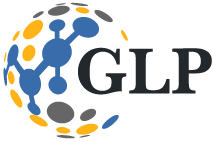Diana Kwon

Grandiosity or self loathing: Understanding the sufferings of narcissists
Chances are you've encountered a narcissist, and they looked nothing like Trump, Musk or Modi. Up to 6 percent of ...

Out-of-body experiences explained: Here’s how the brain ‘creates’ your sense of physical self
New insight comes from zapping a region, known as the anterior precuneus, that causes people to feel dissociated from their ...
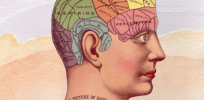
Your brain could be controlling how sick you get — and how quickly you recover
Scientists are deciphering how the brain choreographs immune responses, hoping to find treatments for a range of diseases ...

Losing memory? Brain stimulation can help — but only for a short time
People’s ability to remember fades with age — but one day, researchers might be able to use a simple, drug-free ...
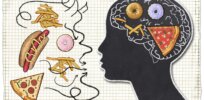
How the brain puts the brakes on overeating
People with a rare genetic disorder known as Prader-Willi syndrome never feel full, and this insatiable hunger can lead to ...
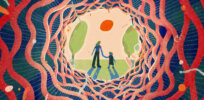
Infographic: Is Huntington’s an ‘incurable’ brain disease? New gene therapies offer hope
Huntington’s disease (HD) is an inherited condition that causes widespread deterioration in the brain and disrupts thinking, behaviour, emotion and ...

‘Game-changing failure’: Trials of two Huntington’s disease-fighting gene therapy drugs halted, in ‘crushing blow’ to sufferers
Researchers had hoped that [a new treatment in trials] —known as antisense oligonucleotides (ASOs)—would be a game changer for [Huntington’s ...
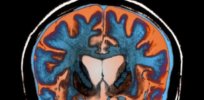
Infographic: Gene therapy drugs that silence the effects of faulty genes could help tackle Huntington’s and other neurodegenerative diseases
Huntington’s disease (HD) is an inherited condition that causes widespread deterioration in the brain and disrupts thinking, behaviour, emotion and ...
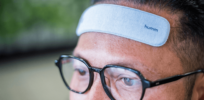
‘Bioelectric memory patch’ promises to boost short-term memory. Could it really work?
What if you could boost your brain’s processing capabilities simply by sticking electrodes onto your head and flipping a switch? ...

Non-addictive version of ecstasy ‘party drug’ emerges as potential treatment for PTSD, anxiety
MDMA, or ecstasy, once had the reputation of exclusively being an illicit party drug popular at raves and dance clubs ...
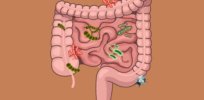
How the microbiome may boost the brain’s recovery from stroke damage
Despite a decades-long search, scientists have yet to pinpoint effective ways of protecting the brain from poststroke damage. In recent ...

Brain organoids may have ‘critical’ research limitation: Imperfect modeling of human development
Despite their potential, [brain] organoids still have some critical limitations. In a study presented [October 22] at the Society for Neuroscience meeting ...
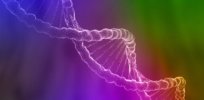
‘Gross and dangerous”: Genetic test for same-sex attraction condemned by scientists
In August, a group of researchers published the results of a massive genome-wide association study on homosexual behavior. The take-home message ...

Beware claims by consumer DNA testing companies: They can’t predict how long you’ll live
“Upload DNA data and know more about yourself,” promises Genomelink, anywhere from fitness-related attributes, such as longevity, pulmonary function, and job-related ...

‘Fight or flight’: How your bones may help you make that decision
In the face of fear, whether it be caused by a grizzly bear or an audience waiting to hear you ...

Tracking Neanderthal DNA in modern humans: There’s been little change in 45,000 years
Neanderthals, modern humans’ closest evolutionary relatives, have been extinct for thousands of years. But due to interbreeding between the two ...
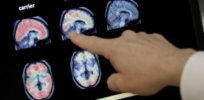
Understanding the ‘little brain’ could be key to treating autism, addiction
For about two centuries the scientific community believed the cerebellum (Latin for “little brain”), which contains approximately half of the ...

Men are less tolerant than women when it comes to repeated pain, study shows
A painful experience is not one you are likely to forget—you don’t need to have a trunk slammed onto your ...

Reversing OCD with intensive 4-day ‘head-on’ therapy
[A]round nine years after [Katherine] Mydland-aas’s cleaning rituals began, a psychologist diagnosed her with obsessive-compulsive disorder (OCD) and referred her ...
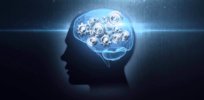
What makes human brain cells so powerful?
Spanish neuroscientist Santiago Ramón y Cajal revolutionized the study of the brain when he observed neurons for the first time ...

Exploring color blindness through human retinas grown in lab
A paper published October 11 in Science uses a retina grown outside the body to show how cones develop into the eyes’ color sensors ...

Cancer screening could be revolutionized by new cell sorting method
The field of cytometry, or cell measurement—which helps doctors diagnose problems including cancer, in which cells morph into unusual forms—has ...
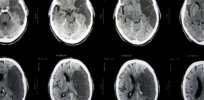
Limiting brain damage in stroke patients by controlling inflammation
In an ischemic stroke a clot blocks a blood vessel to the brain, depriving oxygen and nutrients to part of ...

Extinct strain of hepatitis B found in human remains suggests virus had greater diversity
Despite its prevalence, little is known about the ancestral roots of the [hepatitis B] virus. New findings, published [May 9] in Nature, ...
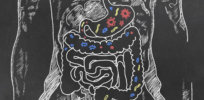
How is the gut linked to Parkinson’s disease?
[P]hysicians have noted that constipation is one of the most common symptoms of Parkinson’s, appearing in around half the individuals diagnosed with ...

Hot stuff: Do human pheromones really exist?
Some companies, such as the Athena Institute, which, according to its founder, Winnifred Cutler, published its 108th consecutive ad in The Atlantic this month, ...
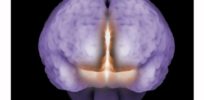
Some schizophrenia, bipolar disorder linked to brain pH imbalances
Sometimes our brains are on acid—literally. A main source of these temporary surges is the carbon dioxide that is constantly ...

Human ‘tree rings’? Neuroimaging predicts life span and brain age
In recent years, scientists have plumbed the molecular depths of the body and surfaced with tell-tale biomarkers of aging, some ...

